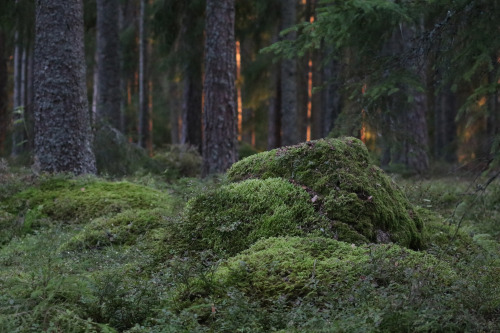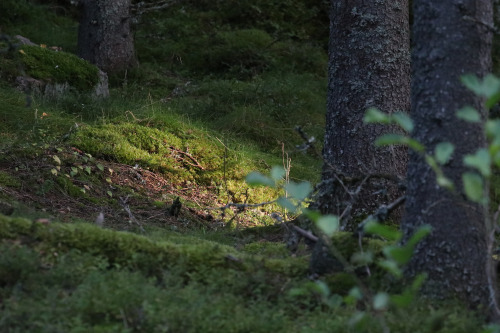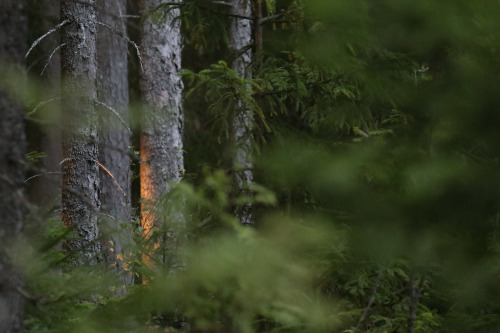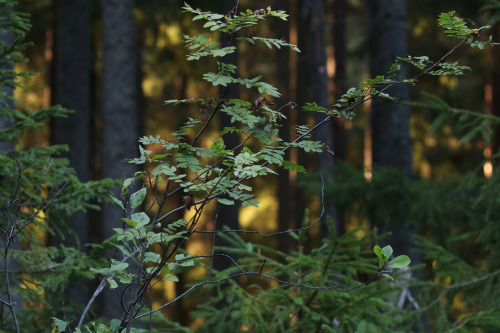The Roasted Planet

The Roasted Planet
Can you hear this exoplanet screaming? As the exoplanet known as HD 80606 b approaches its star from an extreme, elliptical orbit, it suffers star-grazing torture that causes howling, supersonic winds and shockwave storms across this world beyond our solar system. Its torturous journey boils its atmosphere to a hellish 2,000 degrees Fahrenheit every 111 days, roasting both its light and dark sides. HD 80606b will never escape this scorching nightmare. Download this free poster in English and Spanish and check out the full Galaxy of Horrors.
Make sure to follow us on Tumblr for your regular dose of space!
More Posts from Eggxecutive-dysfunction and Others



exploring mountain colors
That smile at the end? Priceless...
I love how both corvids and parrots are in general highly intelligent, but where corvids generally have strict hierarchies, solve disagreements in the pecking order by fighting, and have a strong dislike for anything new or foreign until they figure out how to make use of it, parrots are just here to party.
The New Caledonian crow, who knows how to specifically build a tool in order to build another tool, never engages in play. These motherfuckers are smarter than some people with the right to vote, and they are Extremely Serious Birds. They don't have time to play, they got work to do and kids to raise.
And then there's the kea, straight-up titled "clown of the mountains", that has a specific vocalization for "playtime!". Scientists decided to try what happens if they play the Play Call for two fully-grown adult keas that are together in an area and can clearly see there is no other, third kea to make the call, and they just go "great idea, disembodied voice! it's TIME TO FUCKING PARTY!" and start wrestling.
Imagine working really hard in order to make it into a top university to study astrophysics, making it to your first Very Serious Class, sitting down full of serious determination, and the dude next to you is taking notes without using his hands, with a glitter pen he's shoved up his nose. And his notes are good.




A quiet moment.










How deep does the hole go?
Art by Penzilla


Solstice: Sunrises Around the Year : Does the Sun always rise in the same direction? No. As the months change, the direction toward the rising Sun changes, too. The featured image shows the direction of sunrise every month during 2019 as seen from near the city of Amman, Jordan. The camera in the image is always facing due east, with north toward the left and south toward the right. Although the Sun always rises in the east in general, it rises furthest to the south of east on the December solstice, and furthest north of east on the June solstice. Today is the December solstice, the day of least sunlight in the Northern Hemisphere and of most sunlight in the Southern Hemisphere. In many countries, the December Solstice is considered an official change in season: for example the first day of winter in the North. Solar heating and stored energy in the Earth’s surface and atmosphere are near their lowest during winter, making the winter months usually the coldest of the year. On the brighter side, in the north, daylight hours will now increase every day from until June. via NASA

Mountain Bluebird (Sialia currucoides)
© Richard Trinkner
-
 thetemperancecard reblogged this · 1 month ago
thetemperancecard reblogged this · 1 month ago -
 blue-reimu reblogged this · 2 months ago
blue-reimu reblogged this · 2 months ago -
 thegirlsinthecity liked this · 1 year ago
thegirlsinthecity liked this · 1 year ago -
 keepers-art-n-craft reblogged this · 1 year ago
keepers-art-n-craft reblogged this · 1 year ago -
 caranthira reblogged this · 1 year ago
caranthira reblogged this · 1 year ago -
 thesaltoforion reblogged this · 1 year ago
thesaltoforion reblogged this · 1 year ago -
 saoryfukuschima liked this · 1 year ago
saoryfukuschima liked this · 1 year ago -
 murderless-crows reblogged this · 1 year ago
murderless-crows reblogged this · 1 year ago -
 thegirlsinthecity reblogged this · 1 year ago
thegirlsinthecity reblogged this · 1 year ago -
 katoani liked this · 1 year ago
katoani liked this · 1 year ago -
 libraryofcryptids reblogged this · 1 year ago
libraryofcryptids reblogged this · 1 year ago -
 my-rights-are-grian-rights reblogged this · 1 year ago
my-rights-are-grian-rights reblogged this · 1 year ago -
 thefourthwallhasbroken reblogged this · 1 year ago
thefourthwallhasbroken reblogged this · 1 year ago -
 starryarchitect liked this · 2 years ago
starryarchitect liked this · 2 years ago -
 conceptumain liked this · 2 years ago
conceptumain liked this · 2 years ago -
 flaetsbnort reblogged this · 2 years ago
flaetsbnort reblogged this · 2 years ago -
 xvynth liked this · 2 years ago
xvynth liked this · 2 years ago -
 flaetsbnort liked this · 2 years ago
flaetsbnort liked this · 2 years ago -
 kreebby reblogged this · 2 years ago
kreebby reblogged this · 2 years ago -
 kreebby liked this · 2 years ago
kreebby liked this · 2 years ago -
 ecofridge liked this · 2 years ago
ecofridge liked this · 2 years ago -
 zeromusicality reblogged this · 2 years ago
zeromusicality reblogged this · 2 years ago -
 a--small-green-bird liked this · 2 years ago
a--small-green-bird liked this · 2 years ago -
 thatwhatthing liked this · 2 years ago
thatwhatthing liked this · 2 years ago -
 queenanne1532 liked this · 2 years ago
queenanne1532 liked this · 2 years ago -
 sunstae reblogged this · 2 years ago
sunstae reblogged this · 2 years ago -
 international-nerd liked this · 2 years ago
international-nerd liked this · 2 years ago -
 sleepingpeelz reblogged this · 2 years ago
sleepingpeelz reblogged this · 2 years ago -
 sch-uwu-lchen reblogged this · 2 years ago
sch-uwu-lchen reblogged this · 2 years ago -
 strawberryb33tle liked this · 2 years ago
strawberryb33tle liked this · 2 years ago -
 bugeyedcreature reblogged this · 2 years ago
bugeyedcreature reblogged this · 2 years ago -
 bugeyedcreature reblogged this · 2 years ago
bugeyedcreature reblogged this · 2 years ago -
 bugeyedcreature liked this · 2 years ago
bugeyedcreature liked this · 2 years ago -
 thecryptchick liked this · 2 years ago
thecryptchick liked this · 2 years ago -
 simsphoto liked this · 2 years ago
simsphoto liked this · 2 years ago -
 electroniczombieruins liked this · 2 years ago
electroniczombieruins liked this · 2 years ago -
 equinoxmx liked this · 2 years ago
equinoxmx liked this · 2 years ago -
 lostinspaceage82 reblogged this · 2 years ago
lostinspaceage82 reblogged this · 2 years ago -
 lostinspaceage82 liked this · 2 years ago
lostinspaceage82 liked this · 2 years ago -
 ineedmoredragons reblogged this · 2 years ago
ineedmoredragons reblogged this · 2 years ago -
 ineedmoredragons liked this · 2 years ago
ineedmoredragons liked this · 2 years ago -
 tzaddi reblogged this · 2 years ago
tzaddi reblogged this · 2 years ago -
 ercuyng liked this · 2 years ago
ercuyng liked this · 2 years ago -
 decimadeathing liked this · 2 years ago
decimadeathing liked this · 2 years ago -
 geekysteven reblogged this · 2 years ago
geekysteven reblogged this · 2 years ago -
 laudanine reblogged this · 2 years ago
laudanine reblogged this · 2 years ago -
 geekysteven reblogged this · 2 years ago
geekysteven reblogged this · 2 years ago -
 geekysteven liked this · 2 years ago
geekysteven liked this · 2 years ago -
 jdeeizzle3 reblogged this · 2 years ago
jdeeizzle3 reblogged this · 2 years ago



